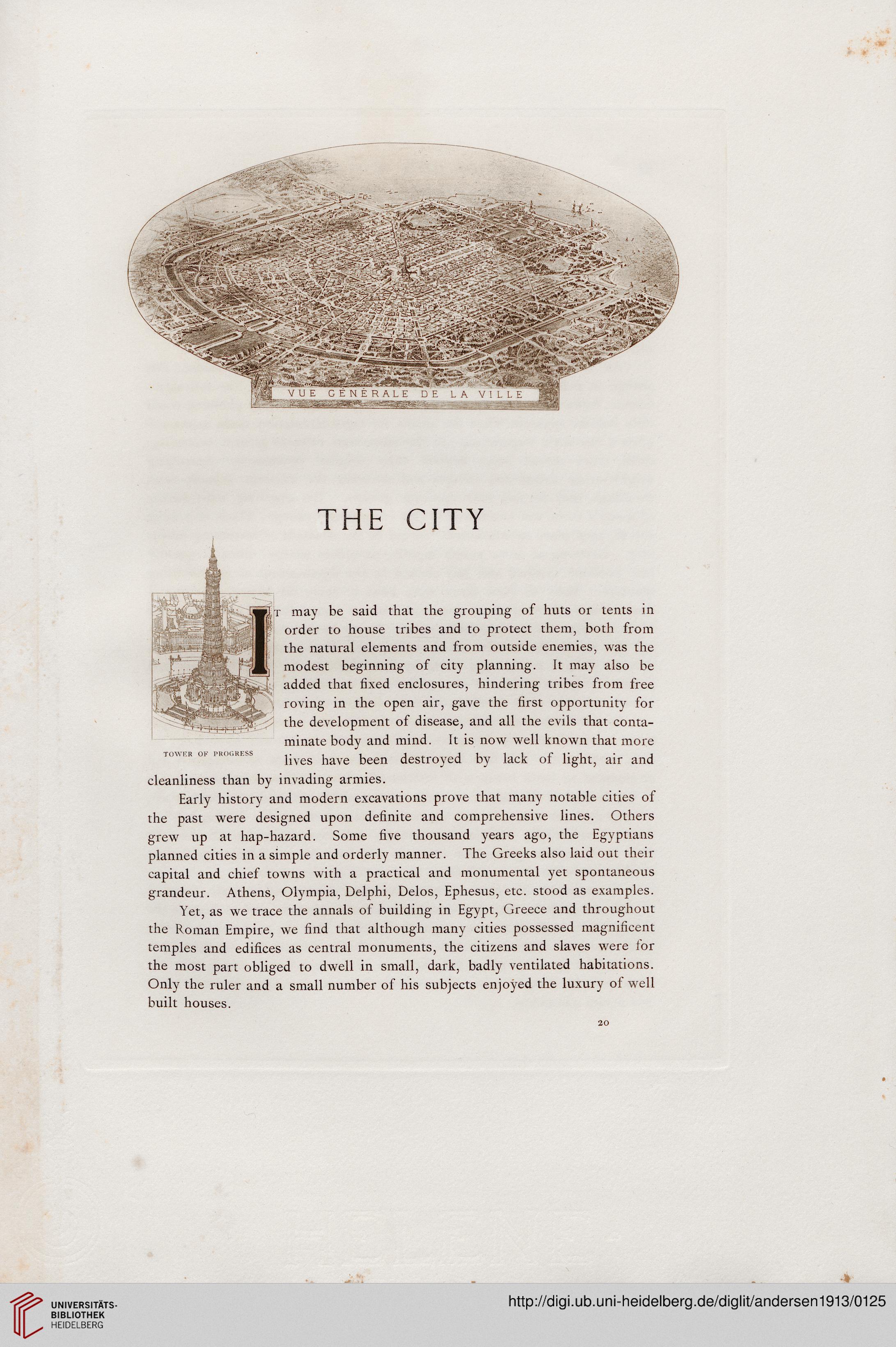THE CITY
TOWER OK PROGRESS
,t may be said that the grouping of huts or tents in
order to house tribes and to protect them, both from
the natural elements and from outside enemies, was the
modest beginning of city planning. It may also be
added that fixed enclosures, hindering tribes from free
roving in the open air, gave the first opportunity for
,r^^ the development of disease, and all the evils that conta-
minate body and mind. It is now well known that more
lives have been destroyed by lack of light, air and
cleanliness than by invading armies.
Early history and modern excavations prove that many notable cities of
the past were designed upon definite and comprehensive lines. Others
grew up at hap-hazard. Some five thousand years ago, the Egyptians
planned cities in a simple and orderly manner. The Greeks also laid out their
capital and chief towns with a practical and monumental yet spontaneous
grandeur. Athens, Olympia, Delphi, Delos, Ephesus, etc. stood as examples.
Yet, as we trace the annals of building in Egypt, Greece and throughout
the Roman Empire, we find that although many cities possessed magnificent
temples and edifices as central monuments, the citizens and slaves were for
the most part obliged to dwell in small, dark, badly ventilated habitations.
Only the ruler and a small number of his subjects enjoyed the luxury of well
built houses.
20
TOWER OK PROGRESS
,t may be said that the grouping of huts or tents in
order to house tribes and to protect them, both from
the natural elements and from outside enemies, was the
modest beginning of city planning. It may also be
added that fixed enclosures, hindering tribes from free
roving in the open air, gave the first opportunity for
,r^^ the development of disease, and all the evils that conta-
minate body and mind. It is now well known that more
lives have been destroyed by lack of light, air and
cleanliness than by invading armies.
Early history and modern excavations prove that many notable cities of
the past were designed upon definite and comprehensive lines. Others
grew up at hap-hazard. Some five thousand years ago, the Egyptians
planned cities in a simple and orderly manner. The Greeks also laid out their
capital and chief towns with a practical and monumental yet spontaneous
grandeur. Athens, Olympia, Delphi, Delos, Ephesus, etc. stood as examples.
Yet, as we trace the annals of building in Egypt, Greece and throughout
the Roman Empire, we find that although many cities possessed magnificent
temples and edifices as central monuments, the citizens and slaves were for
the most part obliged to dwell in small, dark, badly ventilated habitations.
Only the ruler and a small number of his subjects enjoyed the luxury of well
built houses.
20





